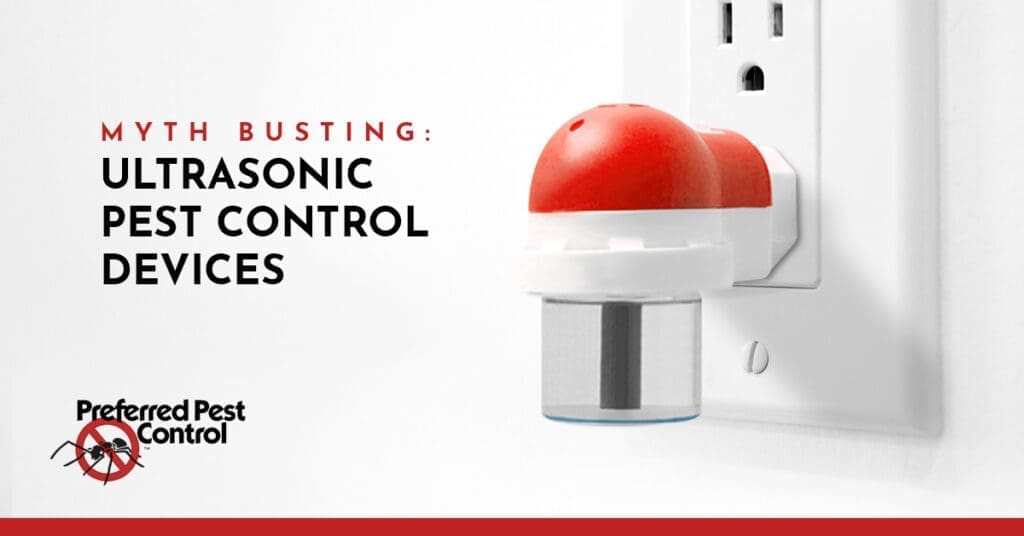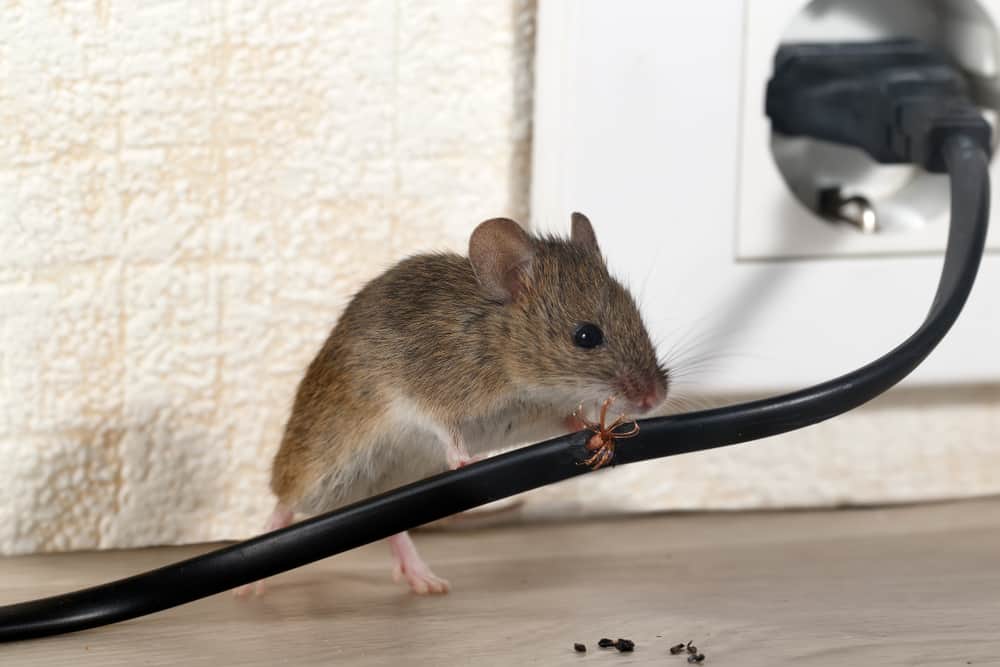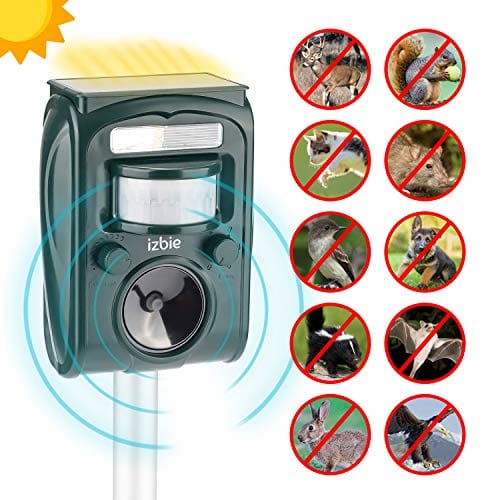Imagine a world free from pesky pests, where you can enjoy your home without the constant worry of unwanted intruders. ultrasonic pest repellers promise just that, with their advanced technology that claims to drive away insects and rodents using high-frequency sound waves. But how do they actually work? And more importantly, are they safe for you and your family? In this article, we will explore the inner workings of ultrasonic pest repellers and delve into the question of their safety, providing you with all the information you need to make an informed decision for your pest control needs.
Overview of Ultrasonic Pest Repellers
Ultrasonic pest repellers are devices that use sound waves to deter pests such as rodents, insects, and spiders from entering or staying in a specific area. These devices emit high-frequency sound waves that are inaudible to humans but can be detected by pests. The sound waves are believed to disrupt the pests’ auditory system, making it uncomfortable for them to stay in the vicinity. Ultrasonic pest repellers are commonly used in homes, offices, and other indoor environments to provide a non-toxic and eco-friendly alternative to traditional pest control methods.
What are ultrasonic pest repellers?
Ultrasonic pest repellers are electronic devices that emit high-frequency sound waves to deter pests. They come in various sizes and designs, ranging from plug-in devices to standalone units. These devices are typically used to repel a wide range of pests, including rodents, cockroaches, ants, spiders, mosquitoes, and more.
History of ultrasonic pest repellers
The concept of using sound waves to repel pests traces back to the 1950s. Early experiments focused on using ultrasound to control rats and mice in laboratory settings. Over the years, advancements in technology have led to the development of more compact and efficient ultrasonic pest repellers for commercial and residential use.
Common types of ultrasonic pest repellers
There are two common types of ultrasonic pest repellers: plug-in and standalone devices. Plug-in repellers are designed to be plugged into electrical outlets and emit ultrasonic waves to repel pests within a specific range. Standalone repellers, on the other hand, are larger units that can cover a larger area and often include additional features such as motion sensors or LED lights.
How Ultrasonic Pest Repellers Work
Principles of ultrasonic sound
Ultrasonic sound refers to sound waves that have a frequency higher than the upper limit of human hearing, which is typically around 20,000 hertz (Hz). Ultrasonic pest repellers emit sound waves in the ultrasonic range, typically between 20,000 Hz and 65,000 Hz. These high-frequency sound waves are believed to be irritating to pests and can disrupt their normal behavior patterns, making them less likely to inhabit the area.
Frequency range used in pest repellers
Different pests have varying sensitivities to different frequencies of sound. Ultrasonic pest repellers are designed to emit sound waves within a specific frequency range that targets the pests they are intended to repel. For example, devices targeting rodents may emit sound waves in the lower ultrasonic range, while those targeting insects may emit waves in the higher ultrasonic range.
Transducers and speakers in ultrasonic pest repellers
Ultrasonic pest repellers typically consist of a transducer and a speaker. The transducer converts electrical energy into ultrasonic sound waves, which are then amplified by the speaker and emitted into the environment. The speaker ensures that the sound waves are projected in a specific direction to effectively repel pests.
Interference with pests’ auditory systems
The high-frequency sound waves emitted by ultrasonic pest repellers are believed to disrupt the auditory systems of pests. Pests rely on their auditory senses to communicate, navigate, and locate food sources. When exposed to the high-frequency sound waves, the pests may experience discomfort, confusion, or disorientation, leading them to avoid the area where the repellers are active.

Effectiveness of Ultrasonic Pest Repellers
Pests targeted by ultrasonic repellers
Ultrasonic pest repellers are marketed as effective solutions for a wide range of pests, including rodents, insects, spiders, and more. However, their effectiveness may vary depending on the specific pest species and environmental factors. While they may be effective in repelling certain pests, they may have limited effectiveness against others.
Laboratory studies on efficacy
Many laboratory studies have been conducted to evaluate the efficacy of ultrasonic pest repellers. These studies often involve exposing pests to ultrasonic sound waves in controlled environments and monitoring their behavior. While some studies have shown positive results, others have found limited or no effect on pests’ behavior and activity.
Real-world effectiveness
In real-world settings, the effectiveness of ultrasonic pest repellers can be influenced by various factors, such as the size and layout of the indoor environment, the type of pests present, and the specific model and quality of the repeller. Some users report positive results and a reduction in pest activity after using ultrasonic repellers, while others may not experience the same level of effectiveness.
Potential limitations and factors affecting effectiveness
It is important to note that ultrasonic pest repellers may have limitations in their effectiveness. Factors such as the density of furniture, walls, and other obstructions can affect the propagation of sound waves and reduce the repellers’ effectiveness. Additionally, pests may become accustomed to the sound waves over time, rendering the repellers less effective. It is recommended to combine the use of ultrasonic repellers with other pest control methods for optimal results.
Safety Concerns of Ultrasonic Pest Repellers
Human and pet safety
Ultrasonic pest repellers are generally considered safe for humans and pets. The sound waves emitted by these devices are inaudible to humans and most pets, ensuring that they do not cause any direct harm or discomfort. However, it is important to use the repellers as directed and avoid prolonged exposure to the sound waves.
Effects on non-target animals
While ultrasonic pest repellers are designed to target specific pests, there have been concerns about their potential effects on non-target animals. Some studies suggest that certain species, such as bats, can be sensitive to ultrasonic sound waves and may be affected by the repellers. It is important to consider the potential impact on non-target animals when using these devices.
Potential risks for sensitive individuals
Individuals with certain medical conditions or sensitivity to sound may experience discomfort or other adverse effects when exposed to ultrasonic sound waves. If you or anyone in your household has such a condition, it is advisable to consult a healthcare professional before using ultrasonic pest repellers.
Compliance with regulatory standards
When purchasing ultrasonic pest repellers, it is essential to ensure that the products comply with relevant regulatory standards and guidelines. Look for certifications and approvals from reputable organizations that validate the safety and effectiveness of the devices.
Quality and safety considerations when purchasing
It is important to choose high-quality ultrasonic pest repellers from reputable manufacturers. Look for devices that have undergone rigorous testing and have positive customer reviews. Avoid purchasing counterfeit or unverified products, as they may not meet safety standards and may be less effective in repelling pests.

Understanding the Benefits of Ultrasonic Pest Repellers
Non-toxic and eco-friendly pest control
One of the major benefits of using ultrasonic pest repellers is that they provide a non-toxic and eco-friendly solution for pest control. Unlike chemical insecticides and baits, ultrasonic repellers do not rely on harmful substances to control pests, making them safer for both humans and the environment.
Elimination of chemical exposure
By using ultrasonic pest repellers, you can significantly reduce or eliminate the need for chemical-based pest control methods. This helps to minimize the risk of chemical exposure to you, your family, and your pets.
Ease of use and installation
Ultrasonic pest repellers are typically easy to use and install. Plug-in devices can be simply plugged into electrical outlets, while standalone units can be placed in strategic locations within the targeted area. No extensive setup or complicated procedures are required.
Coverage area and scalability
Depending on the model and design, ultrasonic pest repellers can cover a range of distances. Some devices are designed for small rooms, while others can cover larger areas such as basements or attics. Additionally, multiple repellers can be used to extend the coverage area, making them a scalable solution for pest control.
Long-term cost savings
While the initial cost of ultrasonic pest repellers may be higher than traditional pest control methods, they can result in long-term cost savings. Once installed, these devices require minimal maintenance and do not require regular refills or replacements like chemical insecticides or baits.
Factors to Consider before Using Ultrasonic Pest Repellers
Target pests in your area
Before investing in ultrasonic pest repellers, it is important to consider the specific pests that are prevalent in your area. Some repellers may be more effective against rodents, while others may be more suitable for insects or spiders. Identify the pests you want to target to ensure that the repellers you choose are appropriate.
Size and layout of the indoor environment
The size and layout of the indoor environment can affect the performance of ultrasonic pest repellers. Larger areas may require multiple repellers to provide adequate coverage. Additionally, obstructions such as furniture, curtains, or walls may interfere with the propagation of sound waves, reducing the effectiveness of the repellers.
Other existing pest control methods
Ultrasonic pest repellers can be used as standalone solutions or in conjunction with other pest control methods. It is important to consider any existing pest control measures you have in place and determine whether the repellers would complement or replace those methods.
Compatibility with electrical systems and outlets
Plug-in ultrasonic pest repellers require access to electrical outlets. Ensure that you have sufficient outlets available in the areas where you plan to use the repellers. Additionally, check the specifications of the repellers to ensure compatibility with the voltage and electrical systems in your country or region.
Maintenance requirements
Ultrasonic pest repellers generally have low maintenance requirements. However, it is important to follow the manufacturer’s instructions regarding cleaning and maintenance to ensure the continued effectiveness of the devices. Regular cleaning and inspections can help prevent dust or debris buildup, which can affect the repellers’ performance.

Common Myths and Misconceptions about Ultrasonic Pest Repellers
Myth: Repellers work against all pests
While ultrasonic pest repellers are effective against certain pests, they are not equally effective against all types of pests. Different pests have different sensitivities to sound waves, and some may be less affected by the repellers’ ultrasonic emissions. It is important to choose repellers that specifically target the pests you want to control.
Myth: Immediate results and complete eradication
Contrary to some claims, ultrasonic pest repellers do not usually provide immediate results or complete eradication of pests. It can take time for pests to be affected by the repellers, and the level of effectiveness may vary depending on various factors. Patience and persistence are key when using these devices.
Misconception: Repellers pose health risks
There is a common misconception that ultrasonic pest repellers pose health risks to humans and pets. However, when used as directed, these devices are generally considered safe. The sound waves they emit are inaudible to humans and most pets, and there is no evidence to suggest that they cause harm or adverse health effects.
Misconception: Repellers work through walls and obstacles
Ultrasonic sound waves do not easily pass through walls, furniture, or other obstacles. The effectiveness of ultrasonic pest repellers can be reduced if there are physical barriers between the repellers and the pests. It is important to strategically place the repellers in areas where the sound waves can propagate effectively.
Comparing Ultrasonic Pest Repellers with Other Pest Control Methods
Chemical insecticides and baits
Ultrasonic pest repellers offer a safer and greener alternative to chemical insecticides and baits. While chemical methods can be highly effective in eliminating pests, they come with potential health risks and environmental concerns. Ultrasonic repellers provide a non-toxic alternative that does not rely on harmful chemicals.
Traps and physical deterrents
Traps and physical deterrents are commonly used in pest control to capture or prevent pests from entering specific areas. While traps and physical deterrents can be effective in certain situations, they may require regular maintenance and pose risks if not handled properly. Ultrasonic pest repellers provide a hands-off approach and can cover larger areas.
Natural and organic pest control methods
Natural and organic pest control methods, such as using essential oils, diatomaceous earth, or sticky traps, can be effective against certain pests. However, these methods may have limitations and may not offer long-term solutions. Ultrasonic pest repellers provide a continuous deterrent that does not rely on specific substances or materials.
Integrated Pest Management (IPM) approaches
Integrated Pest Management (IPM) is a holistic approach to pest control that combines various methods, including cultural, physical, biological, and chemical control measures. Ultrasonic pest repellers can be integrated into an IPM approach to provide an additional tool in the overall pest management strategy. By combining different techniques, IPM aims to achieve long-term pest control with minimal environmental impact.

Tips for Proper Use and Placement of Ultrasonic Pest Repellers
Determining the optimal number of repellers
The number of ultrasonic pest repellers needed depends on the size and layout of the area to be covered. Larger areas may require multiple repellers to provide adequate coverage. Consider the dimensions of the space and the specific repeller’s coverage area to determine the optimal number of devices.
Choosing appropriate locations
Proper placement of ultrasonic pest repellers is crucial for optimal effectiveness. Place the repellers in areas where pests are likely to enter or inhabit, such as near entry points, corners, or areas with signs of pest activity. Avoid placing repellers behind furniture or other obstructions that may block the sound waves.
Avoiding obstructions and interference
Ensure that the sound waves emitted by ultrasonic pest repellers are not obstructed by furniture, walls, or other objects. Physical barriers can reduce the effectiveness of the repellers by blocking or absorbing the sound waves. Keep the area around the repellers clear to allow for maximum propagation of the sound waves.
Supplementing repellers with other control measures
To enhance the effectiveness of ultrasonic pest repellers, consider combining them with other pest control methods. For example, you can use traps, baits, or natural deterrents in conjunction with the repellers to provide a multi-faceted approach to pest control. This can help target pests from different angles and increase the overall effectiveness of the strategy.
Monitoring and adjusting repeller settings
Regularly monitor the area for signs of pest activity and adjust the settings or placement of the ultrasonic pest repellers if necessary. Pests may change their behavior or habits, requiring adjustments to ensure continuous repelling. Be proactive and responsive to any changes in pest activity to maintain effective control.
Product Reviews: Best Ultrasonic Pest Repellers on the Market
Product A: Features, Pros, and Cons
Product A is a plug-in ultrasonic pest repeller designed to repel a wide range of pests, including rodents, insects, and spiders. It features a compact design and covers an area of up to 1,200 square feet. The repeller emits ultrasonic sound waves in the frequency range of 20,000 Hz to 65,000 Hz. Some customers have reported a reduction in pest activity after using this product. However, a few have mentioned that it may not be as effective against certain pests.
Pros:
- Wide coverage area
- Compact design
- Non-toxic pest control solution
- Easy to use and install
Cons:
- Effectiveness may vary depending on pests and environmental factors
- May not work through walls or obstacles
Product B: Features, Pros, and Cons
Product B is a standalone ultrasonic pest repeller with motion sensor technology. It is designed to repel rodents and insects and features a range of 3,000 square feet. The repeller emits ultrasonic sound waves and also includes LED lights that can deter pests. Customers have praised its effectiveness in repelling rodents and its ease of use. However, some have mentioned that the motion sensor may trigger false alarms.
Pros:
- Large coverage area
- Motion sensor technology for enhanced effectiveness
- LED lights for additional deterrence
- Low maintenance requirements
Cons:
- Motion sensor may trigger false alarms
- May not be as effective against all pests
Product C: Features, Pros, and Cons
Product C is a multipurpose ultrasonic pest repeller that can repel rodents, insects, and spiders. It is a plug-in device with a coverage area of up to 800 square feet. The repeller emits ultrasonic sound waves in the frequency range of 20,000 Hz to 55,000 Hz. Customers have reported positive results in repelling various pests, with some mentioning a significant reduction in pest activity. However, a few have mentioned that the effectiveness may diminish over time.
Pros:
- Versatile repeller for different types of pests
- Easy to use and install
- Non-toxic and eco-friendly
- Compact design for use in various indoor environments
Cons:
- Effectiveness may diminish over time
- May require multiple devices for larger areas
In conclusion, ultrasonic pest repellers are popular alternatives to traditional pest control methods. They use high-frequency sound waves to deter pests and offer a non-toxic and eco-friendly solution for pest management. While their effectiveness may vary depending on factors such as the specific pest species and the environment, they can be a useful tool when used in conjunction with other pest control measures. Consider the specific requirements of your situation and the features of different ultrasonic pest repellers to find the best option for your pest control needs.


I am Randy, the author behind PestControld.com. Drawing from decades of experience, I aim to provide valuable insights, expert advice, and practical recommendations to help you make informed decisions when assessing viable pest control solutions.